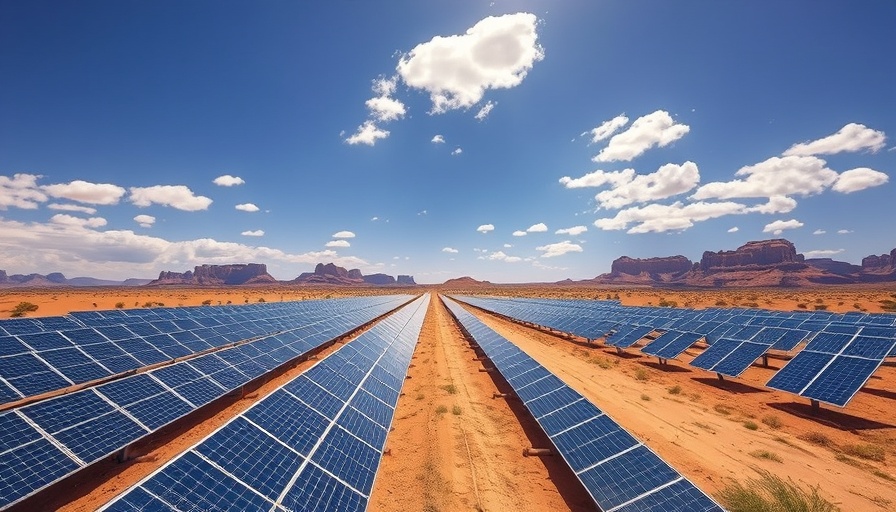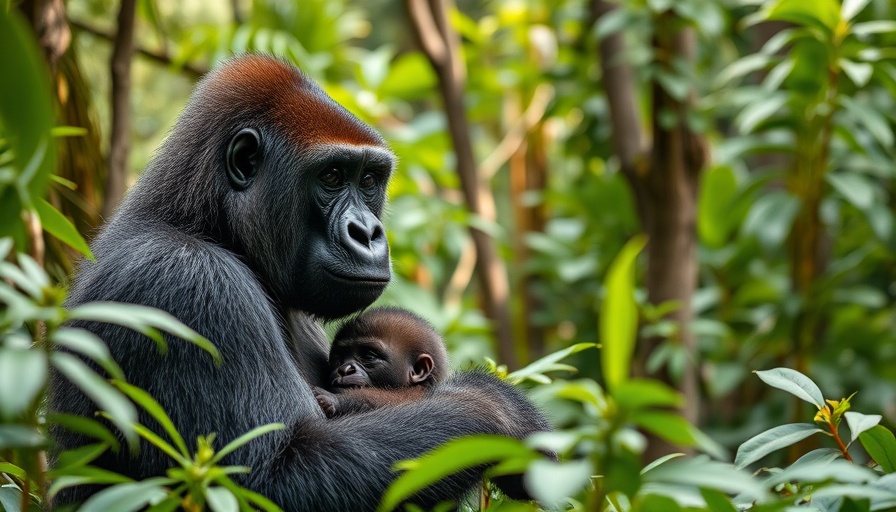
Unpacking the Impacts of Rolling Back Clean Energy Tax Credits
As the debate heats up in Congress, the recent proposal from Senate Republicans to roll back significant aspects of the clean energy tax credits established by the Inflation Reduction Act (IRA) has raised alarms among environmentalists and economic analysts alike. With a mere six months until major tax incentives for electric vehicles and solar energy could be scaled back or wiped out entirely, industry leaders are warning that this move could have dire consequences for job markets and household energy prices.
The Economic Fallout: Jobs at Risk
A key voice in this discussion comes from Jason Grumet, Chief Executive of America’s Clean Power. He argues that the elimination of these credits threatens "hundreds of thousands of jobs" across the country, many of which are situated in Republican-held districts where clean energy initiatives have flourished. Why should professionals and wellness enthusiasts care? Every job created in the renewable sector tends to be well-paying and offers opportunities for personal growth and sustainability—a combination critical for the values of today’s eco-conscious workforce.
Household Impact: Higher Energy Bills Ahead
If these proposed changes come to fruition, analysts predict a significant uptick in household electricity bills. With federal tax credits for solar and wind energy likely to evaporate, families may find themselves stuck with less affordable energy options. Considering that most modern parents are keen on both fiscal and environmental sustainability, this situation poses a risk not only to their wallets but also to their ability to provide a healthy and sustainable future for their children.
Climate Change: A Step Backwards
Experts warn that a rollback of clean energy support will also exacerbate the climate crisis. The IRA was designed not only to promote job creation but also to address pressing environmental concerns. As fossil fuel reliance increases due to diminished clean energy incentives, the resulting spikes in carbon emissions could lead to more extreme weather events—something many households are already grappling with. This sentiment is especially poignant for those who prioritize health and wellbeing, underscoring the connection between clean energy and a healthier planet.
Time to Act: Mobilizing for Change
In light of these potential setbacks, it's essential for professionals and community members to recognize their voice in this national conversation. Mobilizing local action could lead to significant pushback against unfavorable legislation, nurturing a political environment that better supports green initiatives. Advocacy could begin at the workplace, where employees advocate for sustainability practices that align with a bigger vision for energy independence and climate resilience.
Inspirational Quotes: Voices for Clean Energy
In speaking on this critical issue, leaders within the clean energy sector often note, "The time for clean energy was yesterday." This statement resonates with those who recognize that; while progress has been made, the journey toward sustainability is ongoing and vital for future generations. By tapping into this ethos, individuals and families can become champions for change, advocating for policies that prioritize both prosperity and planet.
FAQs: Navigating the Clean Energy Landscape
Many may wonder: What can a household do in response to these legislative proposals? First and foremost, it’s critical to stay informed on upcoming bills and how they may directly affect energy options and prices. Engaging with local representatives and joining community forums devoted to clean energy can also foster a well-informed electorate, ensuring that voices for sustainability are heard.
As changes loom on the horizon, staying connected with community initiatives and pushing for supportive policies is paramount. Now is the moment to collaboratively foster an environment that champions clean energy, contributing to a healthier economy and a healthier planet. If you feel inspired, join local advocacy groups to make your voice count, keeping both jobs and our environment at the forefront of national policy.
 Add Row
Add Row  Add
Add 




Write A Comment